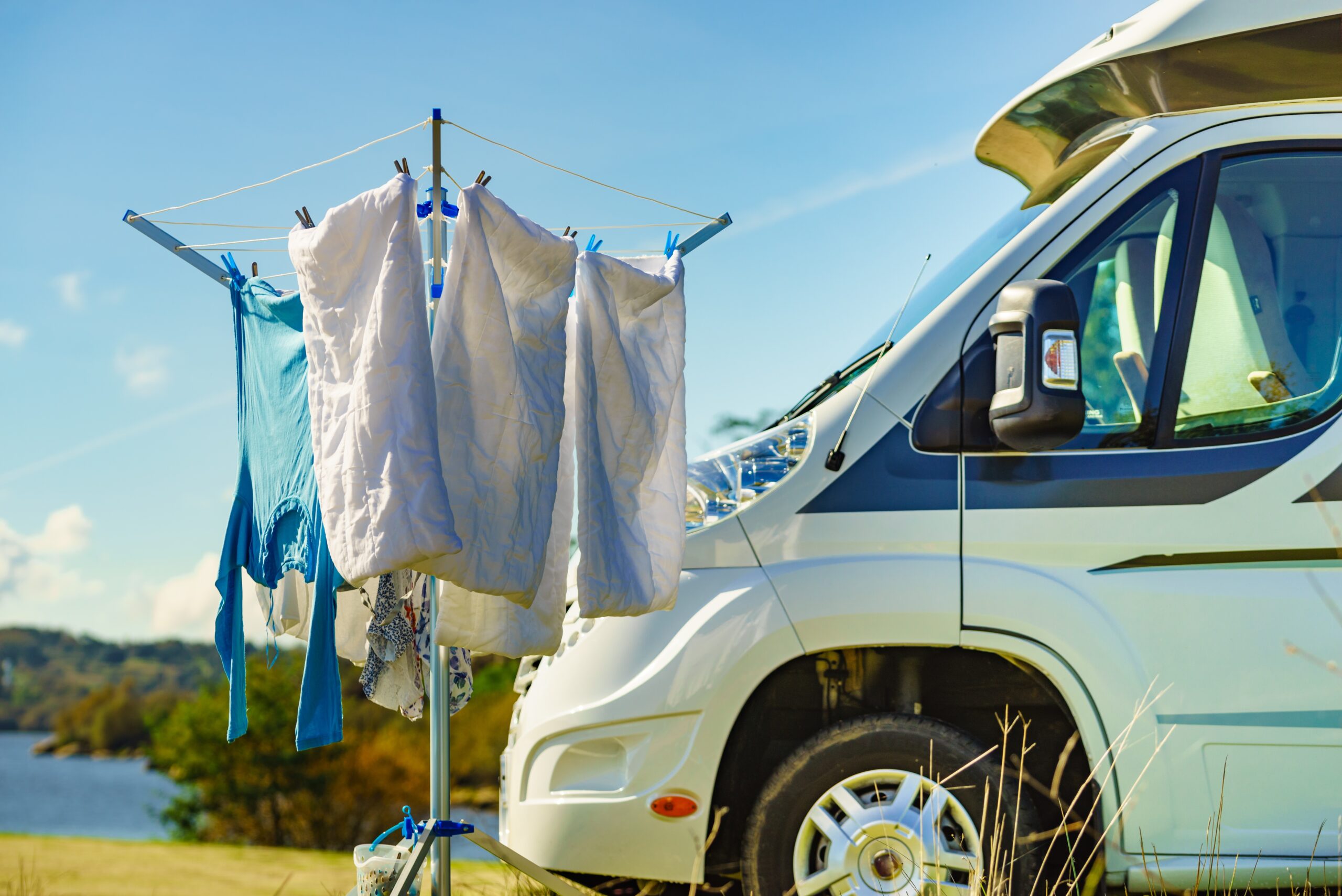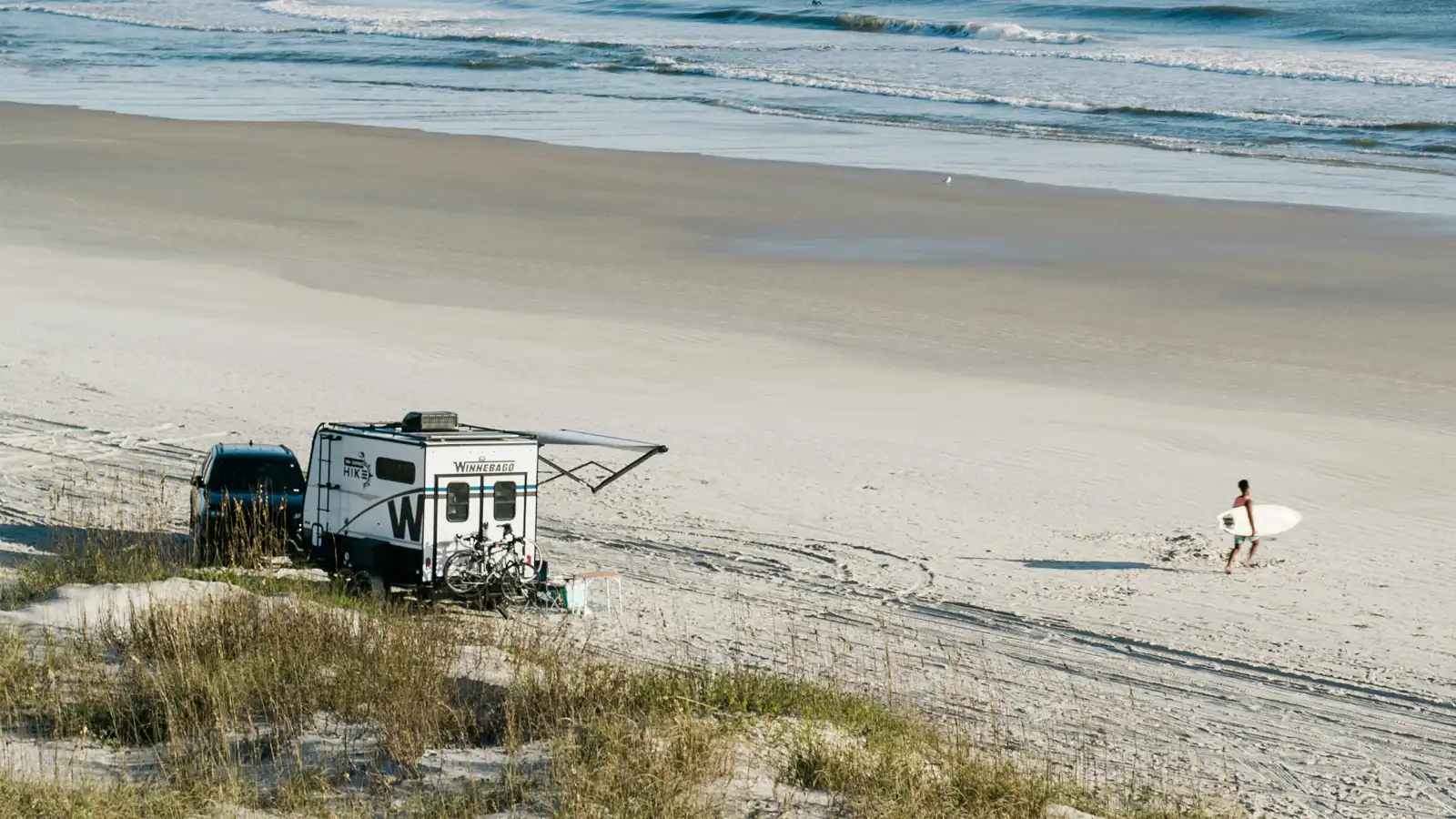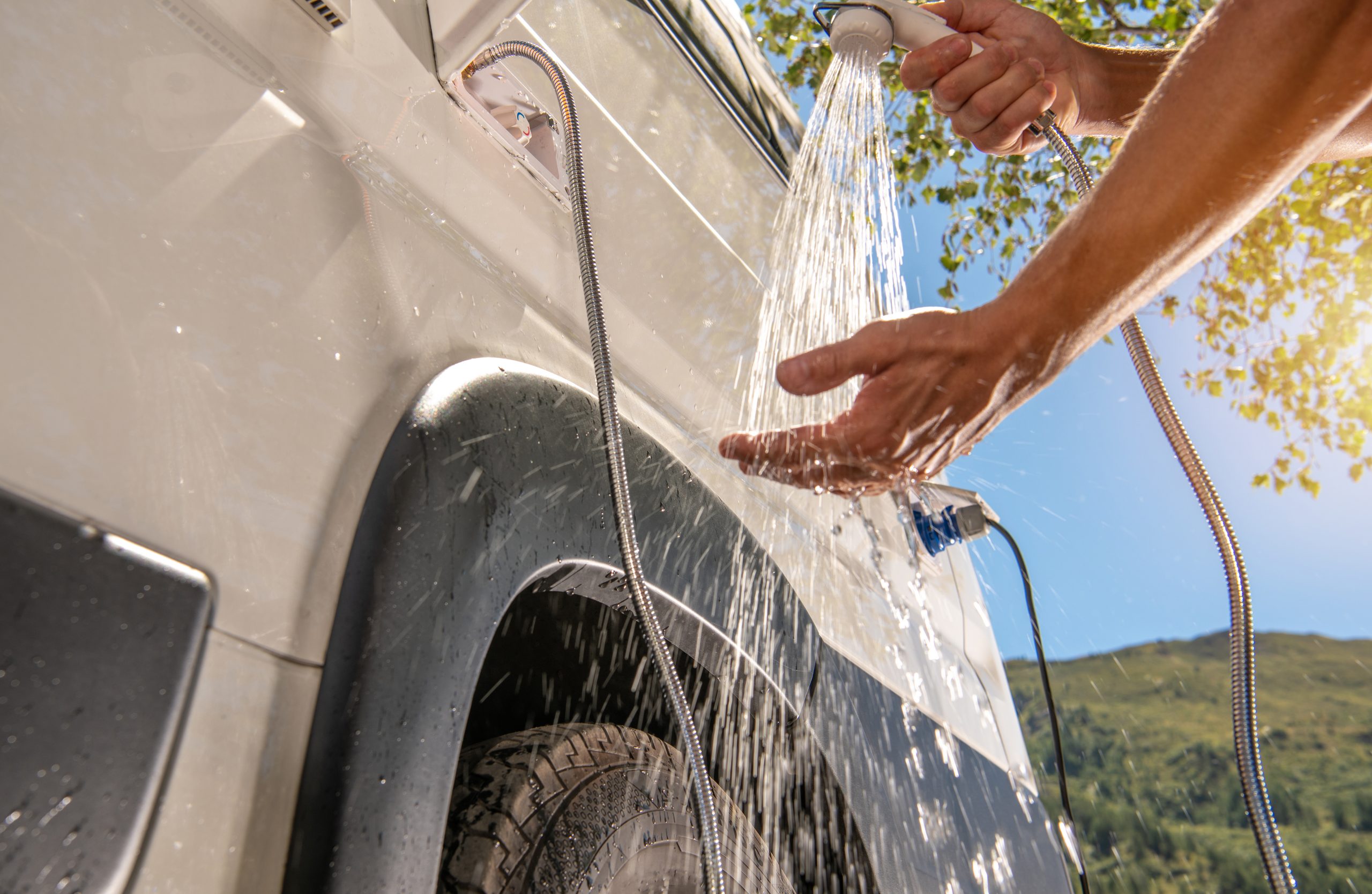
5 Off-Grid Shower Ideas For Those Without A Bathroom
The need for off-grid showers has increased due to the explosion in the number of camper vans, pop-up truck campers, and small RVs without bathrooms on the road over the last few years. Some of these small RVs do have hot water heaters and outdoor showers, but many do not.
Not having a bathroom in your RV shouldn’t prevent you from taking an off-grid shower. Here are a number of off-grid shower products and ideas to meet this need.
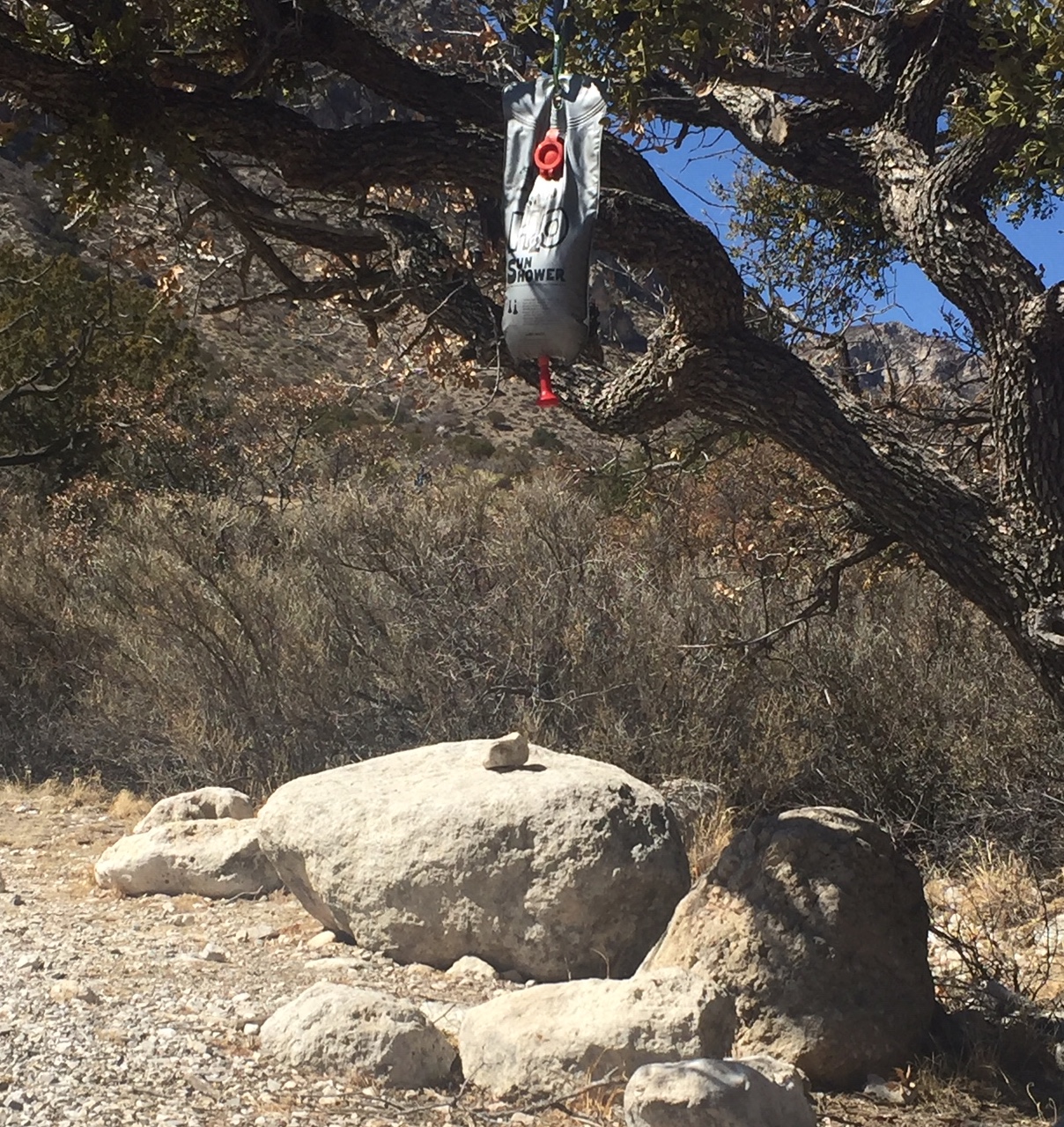
The best off-grid showers
Until a few years ago, a Google search for solar showers or off-grid showers would turn up various styles of a gravity feed bag with a clear front, black back, a fill port, and a hose with a little showerhead. They had a 3-liter to 5-gallon water capacity. You would fill the bag, lay it in the sun for 4-6 hours to heat the water, hang it above your head and take a shower.
Today that same Google search will result in multiple off-grid showers. Some are just improved versions of the basic gravity-fed solar shower, others are elaborate propane-powered heaters with battery-powered pumps to provide water pressure.
Today’s variety of off-grid showers include not only simple gravity-fed showers, but pressurized, roof rack-mounted, pump-operated, and propane-heated systems which are available to purchase or as a DIY project.
Each has its advantages and disadvantages. In my opinion, an off-grid shower should be simple to use, relatively compact when stored, and require little or no power.
I also prefer an off-grid shower that can be heated by the sun, thereby reducing the dependency on fuel, but it should also be easy to fill, to allow the addition of stove-heated water on a cloudy day. Your shower system requirements may differ from mine but with the options and different price ranges available, anyone should be able to find an off-grid shower to meet their needs.
1. Gravity-fed solar showers
These are the least expensive and simplest to use. They do require that you hang them from a sturdy branch or other overhead support.
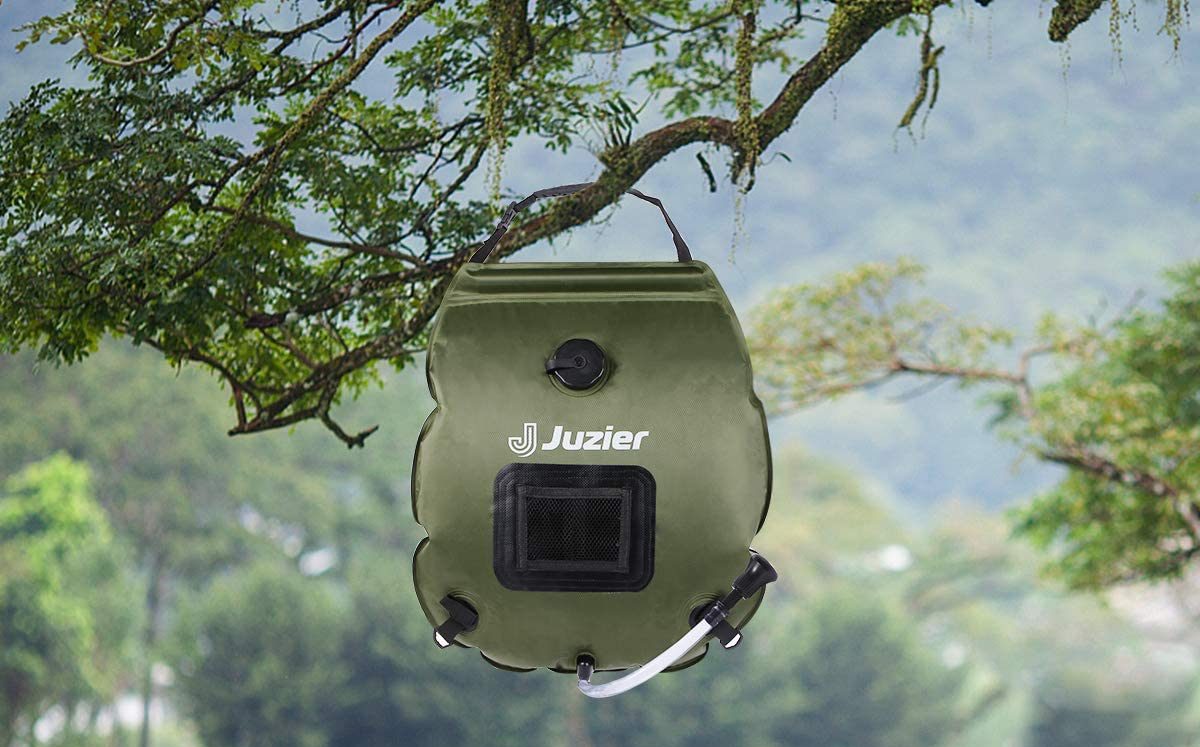
Remember water weighs 2.2 pounds per liter or 8.34 pounds per gallon. These units cost $9.50 – $34.99. A DIY version can be made with a five-gallon bucket and a few PVC parts.
2. Pressurized off-grid showers
These can be pressurized by a hand, a foot pump, portable tire inflator, or a water hose.
Let’s eliminate the water hose pressurized units because if you are truly off-grid this won’t be an option. I prefer the hand or foot-operated models, as when the pressure drops, you can quickly pump more pressure into the unit without leaving the shower.
I would rather not have my portable tire inflator exposed to water. These units do not need to be hung, can be used away from your vehicle, can be heated by the sun or hot water can be added to them, and they are relatively compact. These cost $69.99 – $149.95. A DIY version of this is a clean garden pump sprayer retrofitted with a kitchen spray nozzle.
3. Water pump showers
These units are typically the smallest because they often do not come with a tank. You simply drop the submersible pump in a bucket or jerry can.
The units can be powered by batteries, a USB rechargeable power pack, or a plug for a typical automobile 12-volt outlet. These cost around $34.99 – 46.99.
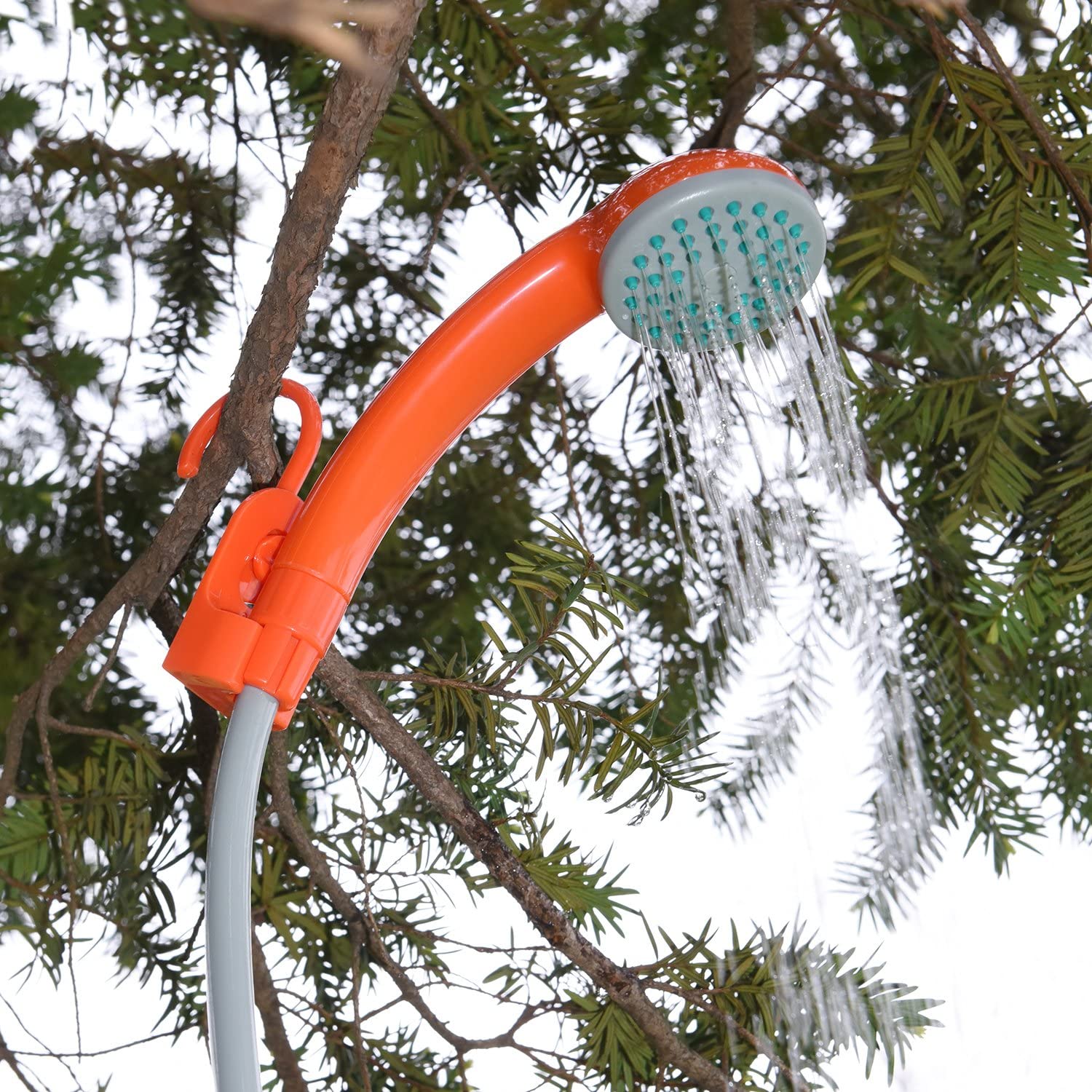
4. Rack-mounted showers
Units such as the RoadShower by Yakima require secure mounting to a very sturdy roof rack to prevent the unit from being dislodged in an accident and becoming a missile. They tend to be the most expensive, they are usually black and absorb solar energy.
You will most likely need a ladder to fill them and they are not easy to fill with externally heated water when solar energy is inadequate. Some of these can only be filled and pressurized with a garden hose, therefore should be ruled out, because you won’t be able to refill them off-grid. These cost $300 – $550. A DIY version can be built with PVC pipe, and the proper fittings, but should include a pressure relief valve for safety.
5. Propane heated showers
Zodi Outback Gear offers a number of sizes and two styles of propane-heated off-grid showers, ranging from $139.95 to $519.95. The simplest is a 3-gallon metal tank which is heated over a propane burner, then pressurized with a built-in pump.
They also have a number of units that supply endless hot water at a preset temperature up to 100 degrees Fahrenheit. These units have a built-in propane burner, and a battery-operated pump that pulls water from a bucket, pumps the water through the heater, and then out through the showerhead.
These units provide the closest thing to a low-pressure shower at home. The amount of hot water for a shower is only limited by the source of cold water and the running time of the 1-pound propane cylinder. Zodi claims that four D batteries and a 1-pound propane cylinder will heat 60 gallons of water.
The units are well constructed, have a stable base to support the burner, and have a built-in piezo push-button ignition. However, the showerhead is very basic, similar to the showerheads on the gravity-fed systems.
A large capacity unit can be a trade-off if you plan to heat the water using solar energy. The larger the capacity, the longer it will take to heat the water using the sun’s energy.
In this writer’s opinion, 3 liters is the minimum size for one person with short hair to get an adequate shower. Two simple 3-liter gravity feed solar showers might be a better solution than one large 4-gallon version. Not only to allow the water to heat faster, but also to prevent the first person from using more than their fair share of hot water.
Vehicle or rack-mounted units, once filled, are ready to use without any further setup. The negative of these units is that they are difficult to fill and require you to shower next to your vehicle, potentially creating an inconvenient, muddy mess next to your RV.
Units that require propane, batteries, or some external or rechargeable source of power, do require some attention to ensure you have an adequate supply of fuel, batteries, or a charge.
The last consideration is setup and storage time. Some of you may set up a somewhat permanent off-grid camp and stay in one place for your entire camping trip, others may break camp and move more often.
Other considerations
From my point of view, units such as the Quechua 10-liter pressure balance solar shower or the Nemo Helio Pressure Shower are worth your consideration.
They are compact, simple to use, do not require any external power source, hold enough water for two showers, are not attached to your vehicle, do not require hanging, and can be easily be used to rinse dishes or anything else. Be advised the majority of these off-grid showers are not suitable for holding potable water.
In addition to using these off-grid shower units to bathe and do dishes while camping, you will find other uses as well such as extinguishing your campfire, rinsing fishing waders, boots, and your dog’s feet.
Disposable body wipes
We don’t always camp off-grid in dry, warm weather, therefore, it’s always good to have a backup plan. There will be days when it is too cold or windy to shower outside.
I carry disposable Sage cleansing washcloths. They come eight to a resealable package, are hypoallergenic, and also contain Vitamin E and aloe to nourish dry skin. They cost approximately $5- 8.00 for a package of eight.
If you plan ahead on a cold sunny day, you can place a sealed pack of them on your dashboard in the sun and they will warm. They are also microwavable. But even without warming, these washcloths can be used inside your RV, away from the elements, and possibly with the RV furnace blasting hot air.
With practice, you will find that you can get fairly clean and refreshed with these wipes. There are a number of companies that make similar products. You can also purchase adult wipes and baby wipes in grocery stores, but I find those a bit small and fragile.
Privacy enclosures
If you are an exhibitionist, you may skip this section. However, if other people are nearby, most of us will either need a tree branch in a secluded area, a bathing suit, or a privacy shower tent. There are many choices on the market, but three major types.
The free-standing tent style, the single point hanging version, and rack or RV wall-mounted versions. In addition to using these privacy enclosures for showering, some can also be used to house a portable toilet, as a changing room to avoid bringing sand into your RV when camping on the beach, and as a place to hang your fishing wanders overnight.
Hanging privacy shelters
Hanging versions, such as the Texsport Camp Shower and Shelter, are utilized by hanging from a single attachment point and include a 4-gallon solar shower.
These hanging units require a tree or other support and therefore may not be useful in all off-grid camping areas such as the desert. With some DIY modification, they could be hung from an RV ladder or vehicle rack system.
Freestanding pop-up shelters
Freestanding pop-up units are available as a one-room version without a floor, or as a two-room version with screened windows, a vented roof, and two different floors.
One floor has mesh along the sides in the shower area to allow water to drain, while the other room has a solid floor to serve as a dry changing room. The dry changing room is also a good place for your portable toilet, allowing you to shower without having to move the portable toilet.
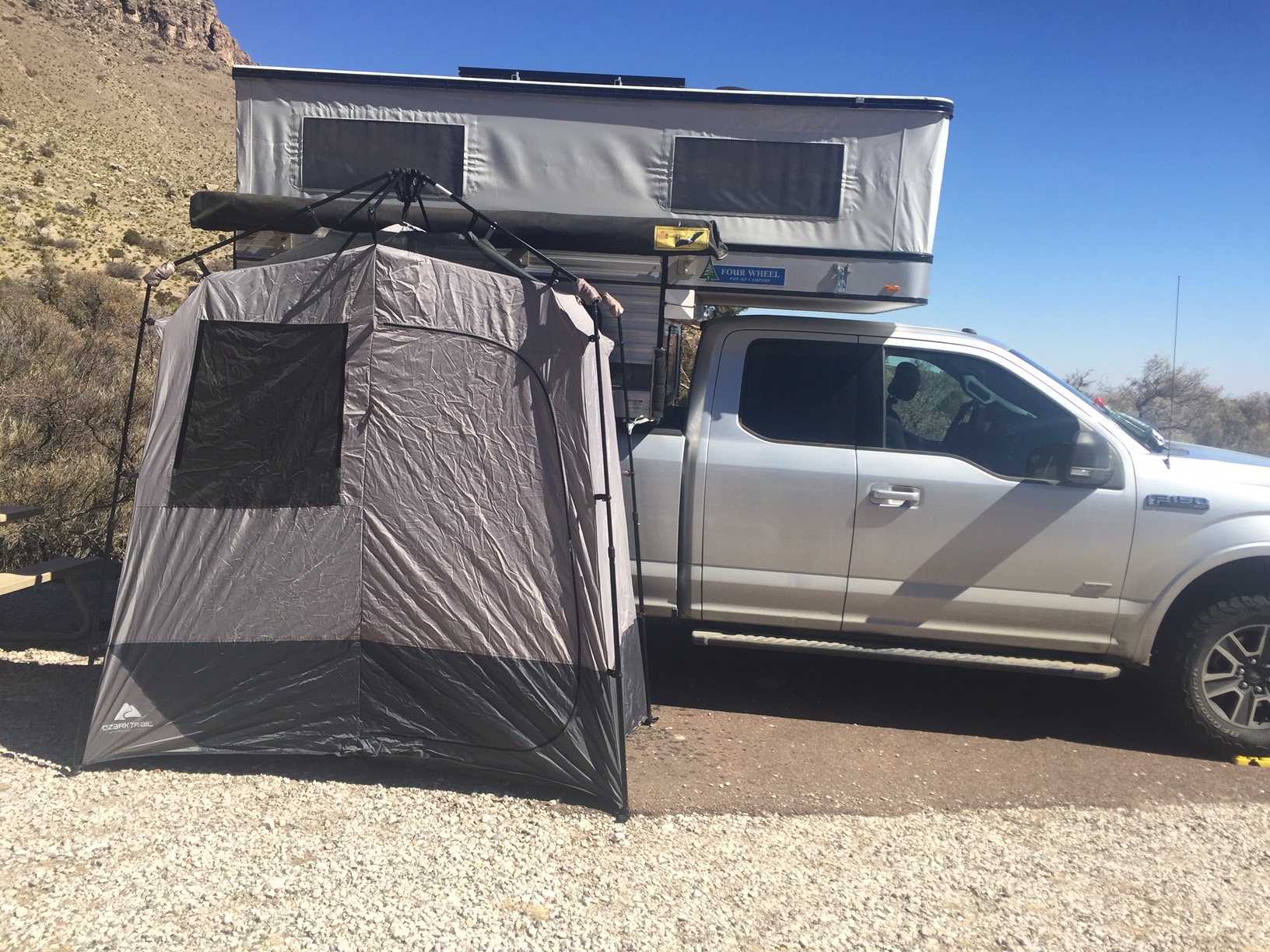
Whatever pop-up model you choose, be sure it can be securely staked to the ground or tied to your RV. I have seen them sail through campgrounds on windy days.
I own the two-room version. I not only use it for showering and using the portable toilet, but I also use it to change out of my fishing waders on rainy days.
Rack or RV-mounted privacy shelters
RV-mounted versions are available for purchase as well as many DIY versions. These units are either mounted to a roof rack system or mounted to any flat surface such as the wall of your RV, like the QuickPitch Ensuite.
They tend to be the most expensive, do not require trees, and therefore can be used in any off-grid camping area. They do require you to shower next to your vehicle.
As a safety precaution, do not mount or attach any privacy shower enclosure over or near the RV hot water or furnace exhaust.
Choosing an off-grid shower privacy shelter
Setup and storage time on all these units is relatively quick, but they should be allowed to dry completely before storage to prevent mold and mildew growth or opened to dry as soon as possible if put away wet.
Although all these privacy shower enclosures will work with any of the off-grid showers, it is worth considering similar features when selecting a shower privacy enclosure to use with your off-grid shower.
For example, if you select a shower which is attached to your vehicle then the RV-mounted shower enclosure type might be the most convenient, whereas if you want the option to shower away from your vehicle, then these would be a poor choice.


